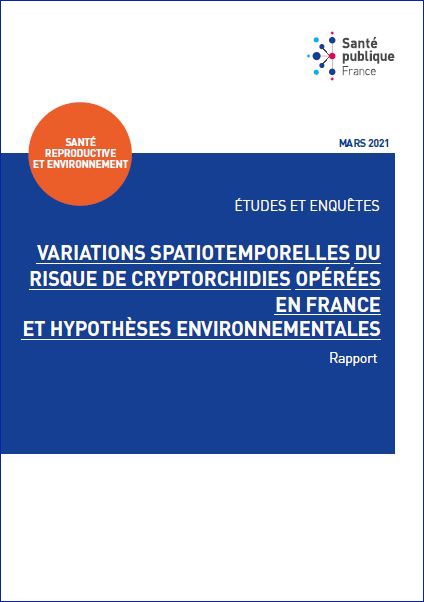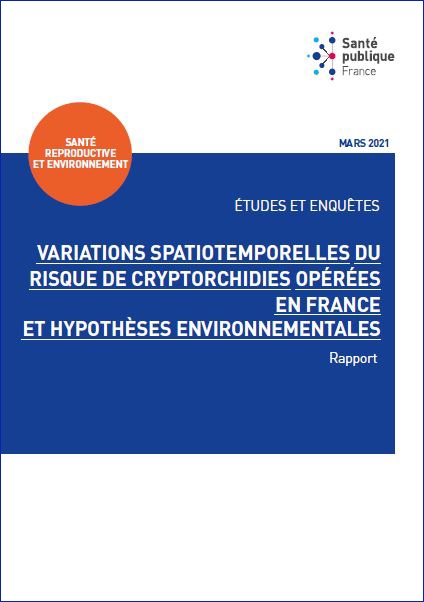
Santé publique France has set up a national program to monitor reproductive health indicators related to exposure to endocrine disruptors. Cryptorchidism (non-descent of the testicles into the scrotum in boys) was selected in this setting based on the weight of evidence. This new study, conducted from the PMSI on new cases of cryptorchidism operated on over the period 2002-2014 in the population of boys aged 0 to 6, has as its originality an analysis of national data on a fine scale, the postal code. This approach made it possible to study a large sample of incident cases over a period of 13 years (91,400 in the whole of France, including Overseas, and 89,382 in metropolitan France) and to analyze their geographical distribution using appropriate statistical methods. : spatial modeling at the postal code scale and detection of clusters by the methods of Kulldorff (SaTScan) and Tango and Takahashi (FleXScan). A spatio-temporal analysis at the level of the departments made it possible to highlight the increase in the incidence rate, at the national level (+ 37.1%: 31.5%; 42.9%) and in almost all the departments as well as strong geographical heterogeneity. A trend towards the aggregation of cases of cryptorchidism operated on the territory was observed more precisely at the level of the postal code. About twenty clusters of a few hundred km2, scattered in the North and the Center-East of France have been identified. Their descriptive analysis suggests the contributing role of geographically determined socio-economic and environmental factors in the occurrence of cryptorchidism. This descriptive study is the first to be carried out on cryptorchidism operated on a national scale, with a very large sample. It should be seen as a hypothesis generation study. The hypotheses discussed with regard to possible environmental or occupational exposure, current or past, to endocrine disruptors (metals, dioxins, PCBs) must be further investigated by means of ecological studies and tested by targeted etiological studies.
Author : Le Moal Joëlle, Goria Sarah, Guillet Agnès, Rigou Annabel, Chesneau Julie
Year of publication: 2021
Pages: 42p.
Collection : Studies and surveys













